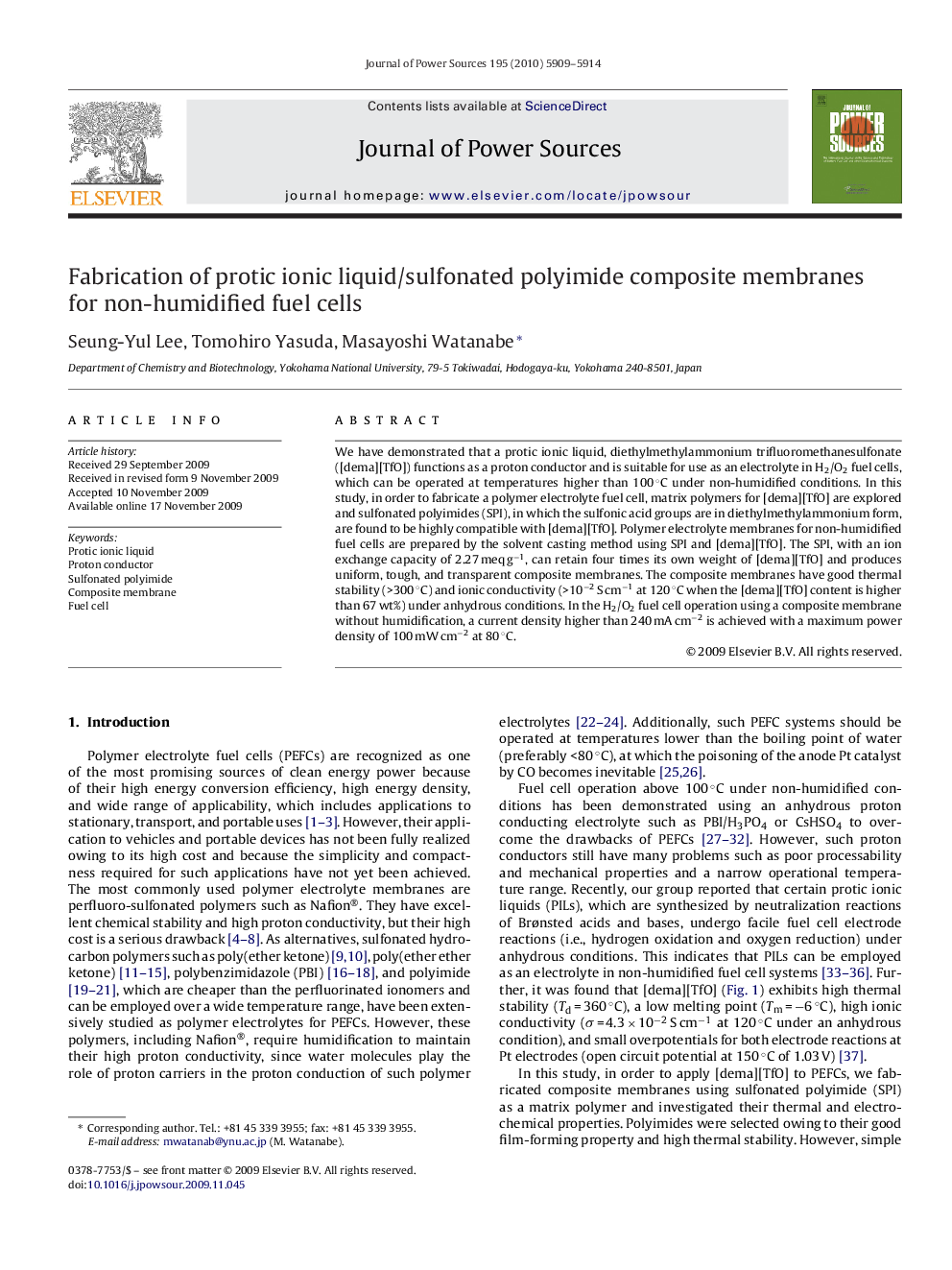| Article ID | Journal | Published Year | Pages | File Type |
|---|---|---|---|---|
| 1288978 | Journal of Power Sources | 2010 | 6 Pages |
We have demonstrated that a protic ionic liquid, diethylmethylammonium trifluoromethanesulfonate ([dema][TfO]) functions as a proton conductor and is suitable for use as an electrolyte in H2/O2 fuel cells, which can be operated at temperatures higher than 100 °C under non-humidified conditions. In this study, in order to fabricate a polymer electrolyte fuel cell, matrix polymers for [dema][TfO] are explored and sulfonated polyimides (SPI), in which the sulfonic acid groups are in diethylmethylammonium form, are found to be highly compatible with [dema][TfO]. Polymer electrolyte membranes for non-humidified fuel cells are prepared by the solvent casting method using SPI and [dema][TfO]. The SPI, with an ion exchange capacity of 2.27 meq g−1, can retain four times its own weight of [dema][TfO] and produces uniform, tough, and transparent composite membranes. The composite membranes have good thermal stability (>300 °C) and ionic conductivity (>10−2 S cm−1 at 120 °C when the [dema][TfO] content is higher than 67 wt%) under anhydrous conditions. In the H2/O2 fuel cell operation using a composite membrane without humidification, a current density higher than 240 mA cm−2 is achieved with a maximum power density of 100 mW cm−2 at 80 °C.
